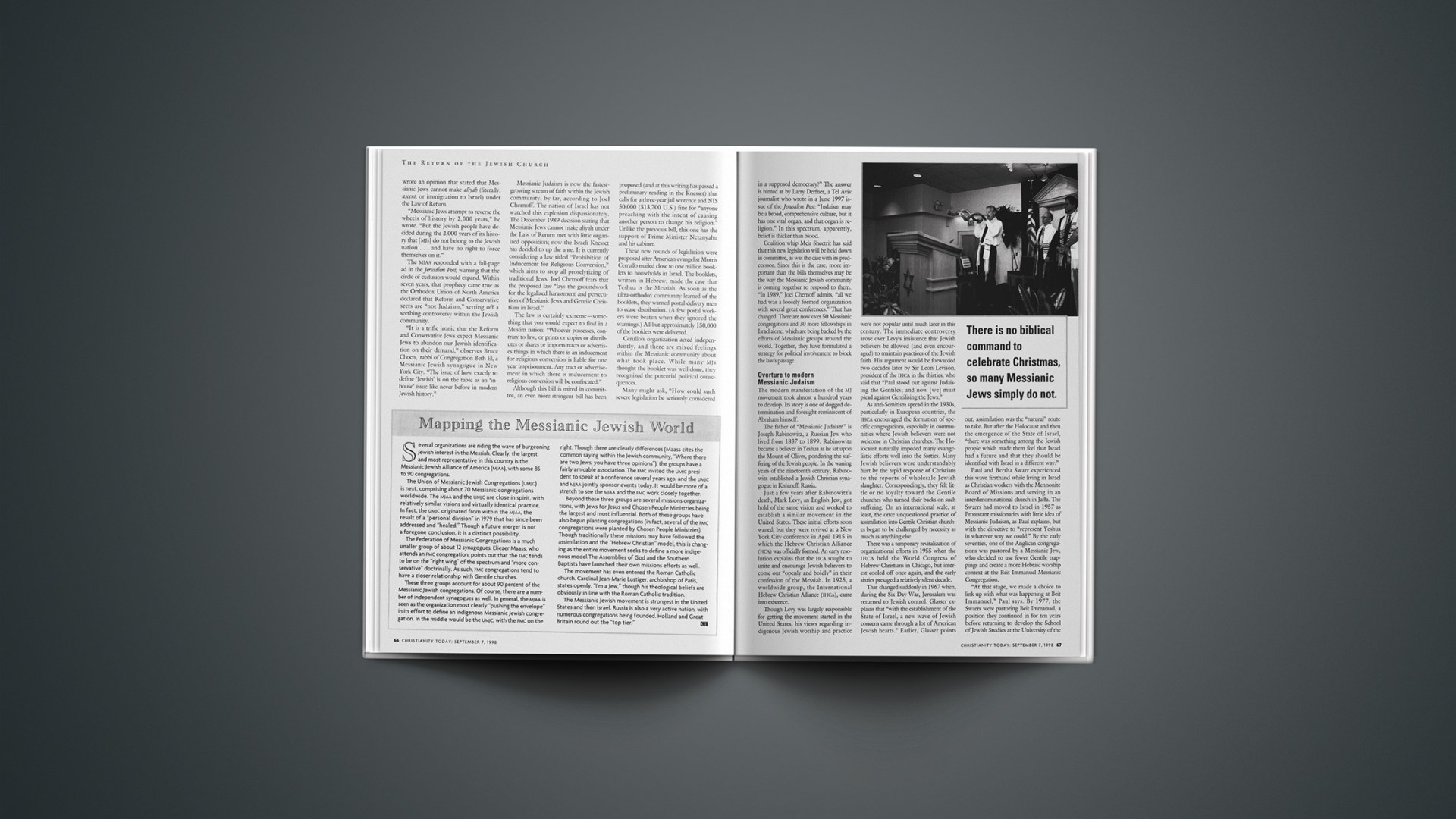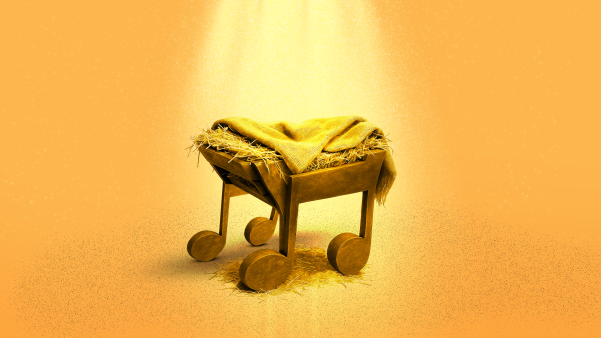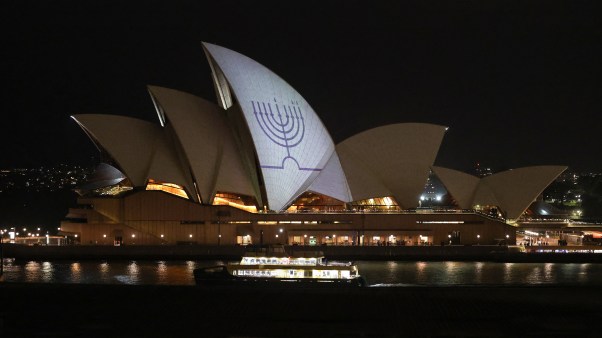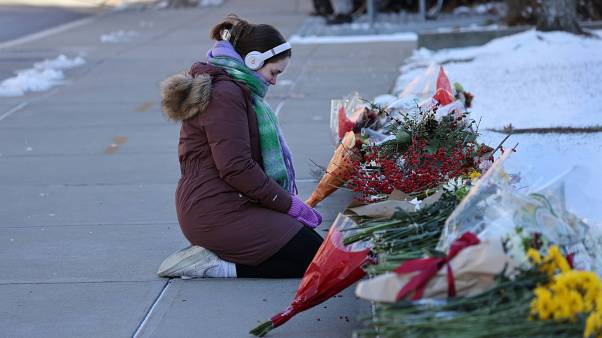Several organizations are riding the wave of burgeoning Jewish interest in the Messiah. Clearly, the largest and most representative in this country is the Messianic Jewish Alliance of America (MJAA), with some 85 to 90 congregations.
The Union of Messianic Jewish Congregations (UMJC) is next, comprising about 70 Messianic congregations worldwide. The MJAA and the UMJC are close in spirit, with relatively similar visions and virtually identical practice. In fact, the UMJC originated from within the MJAA, the result of a “personal division” in 1979 that has since been addressed and “healed.” Though a future merger is not a foregone conclusion, it is a distinct possibility.
The Federation of Messianic Congregations is a much smaller group of about 12 synagogues. Eliezer Maass, who attends an FMC congregation, points out that the FMC tends to be on the “right wing” of the spectrum and “more conservative” doctrinally. As such, FMC congregations tend to have a closer relationship with Gentile churches.
These three groups account for about 90 percent of the Messianic Jewish congregations. Of course, there are a number of independent synagogues as well. In general, the MJAA is seen as the organization most clearly “pushing the envelope” in its effort to define an indigenous Messianic Jewish congregation. In the middle would be the UMJC, with the FMC on the right. Though there are clearly differences (Maass cites the common saying within the Jewish community, “Where there are two Jews, you have three opinions”), the groups have a fairly amicable association. The FMC invited the UMJC president to speak at a conference several years ago, and the UMJC and MJAA jointly sponsor events today. It would be more of a stretch to see the MJAA and the FMC work closely together.
Beyond these three groups are several missions organizations, with Jews for Jesus and Chosen People Ministries being the largest and most influential. Both of these groups have also begun planting congregations (in fact, several of the FMC congregations were planted by Chosen People Ministries). Though traditionally these missions may have followed the assimilation and the “Hebrew Christian” model, this is changing as the entire movement seeks to define a more indigenous model.The Assemblies of God and the Southern Baptists have launched their own missions efforts as well.
The movement has even entered the Roman Catholic church. Cardinal Jean-Marie Lustiger, archbishop of Paris, states openly, “I’m a Jew,” though his theological beliefs are obviously in line with the Roman Catholic tradition.
The Messianic Jewish movement is strongest in the United States and then Israel. Russia is also a very active nation, with numerous congregations being founded. Holland and Great Britain round out the “top tier.”
Copyright © 1998 Christianity Today. Click for reprint information.









